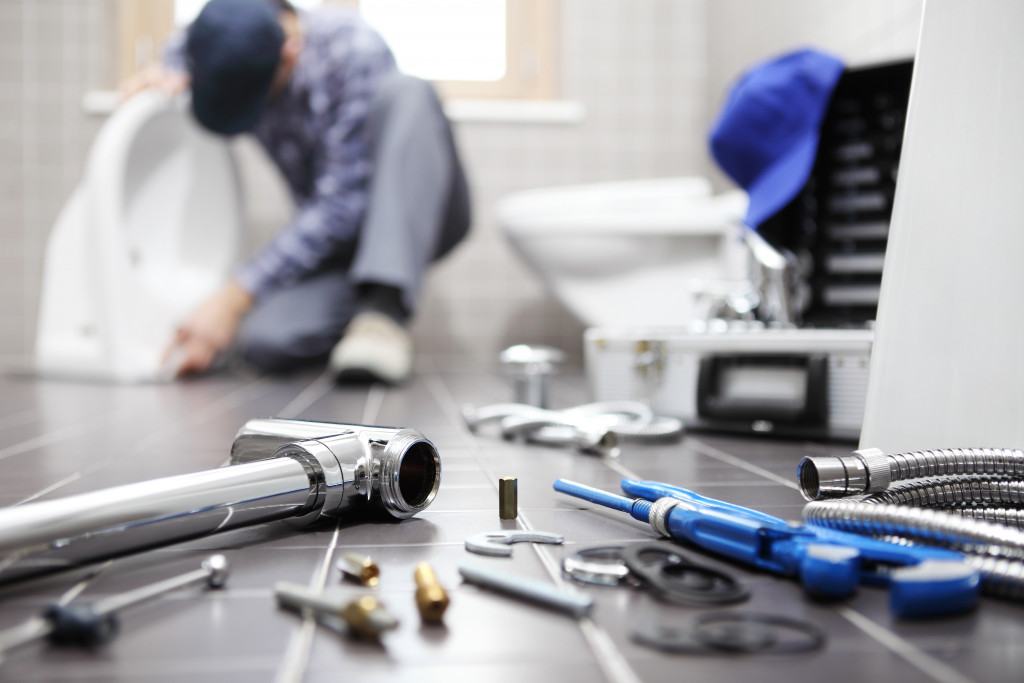Renovating your home can be a daunting task. It can be expensive, time-consuming, and messy. But it doesn’t have to be! There are plenty of ways to renovate your home in an eco-friendly way to save you money and help the environment.
This blog post will give you eight tips on renovating your home in an eco-friendly way. These tips will help you save money, reduce your carbon footprint, and live a more sustainable lifestyle.
1. Use Recycled Materials
One of the best ways to be eco-friendly when renovating your home is to use recycled materials. This can include using recycled wood, metal, glass, or even plastic. This will not only save you money, but it will also help to reduce the amount of waste that goes into landfill sites.
You can find recycled materials at your local salvage yard or recycling center. You can also check with your local building department to see if they have any restrictions on using recycled materials in your home.
2. Use Non-Toxic Paints and Stains
When renovating your home, it’s important to use non-toxic paints and stains. These products are safer for you and your family, and they’re also better for the environment. Not only do they emit fewer harmful chemicals, but they also don’t contain volatile organic compounds (VOCs). VOCs are released into the air as gases and can cause health problems.
Some of the most popular non-toxic paints and stains are made with natural ingredients like clay, milk casein, and plant oils. These products are available in a variety of colors, so you can easily find the perfect shade for your home.
3. Use Reclaimed Wood
Reclaimed wood is a great way to add character to your home while being eco-friendly. This type of wood is sourced from old buildings, barns, and factories. It’s then cleaned and refinished to be used in your home.
Reclaimed wood is a sustainable choice because it would otherwise end up in a landfill. It’s also more durable than new wood, so it will last longer. And because each piece of wood is unique, it will add charm and personality to your home.
4. Install Solar Panels
Solar panels are a great way to reduce your carbon footprint and save money on your energy bills. They work by converting sunlight into electricity, which you can then use to power your home.
Installing solar panels is a big investment, but it will pay off in the long run. Solar panels have an average lifespan of 25 years, so you’ll be saving money for a long time. And, if you live in an area with high electricity rates, solar panels can save you even more money. So contact a Installing low-flow fixtures is an easy way to reduce your home’s water consumption. Low-flow showerheads, toilets, and faucets can all save you water and money on your utility bills.
Water is a precious resource, so it’s important to use it wisely. By switching to low-flow fixtures, you can save water and help the environment.

6. Seal Your Home
Sealing your home can help you save money on your energy bills and make your home more comfortable. By sealing cracks and gaps, you can prevent heat from escaping in the winter and cool air from escaping in the summer.
Sealing your home is a simple and inexpensive way to make it more energy-efficient. And it’s something you can do yourself with some basic tools and materials.
7. Add Insulation
One of the most important ways to make your home more eco-friendly is to add insulation. This will not only conserve energy but will also keep your home more comfortable throughout the year.
There are several types of insulation, so it’s important to choose the right one for your home. Some common types of insulation are fiberglass, cellulose, and spray foam. Each type has its own benefits, so be sure to do your research before making a decision.
8. Use LED Light Bulbs
LED light bulbs are a great way to save energy and money. They use less energy than traditional incandescent bulbs, and they last much longer. In fact, LED bulbs can last up to 25 times longer than incandescent bulbs.
So if you’re looking for a way to be more eco-friendly, switch to LED light bulbs. You’ll save money on your energy bills, and you won’t have to replace your light bulbs as often.
Making your home more eco-friendly doesn’t have to be expensive or time-consuming. There are many simple and inexpensive changes you can make to save energy, water, and money. And by making these changes, you’ll be doing your part to help the environment. So start today and see how easy it is to go green.
